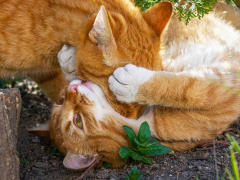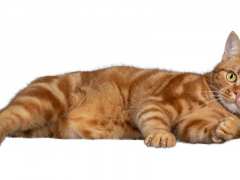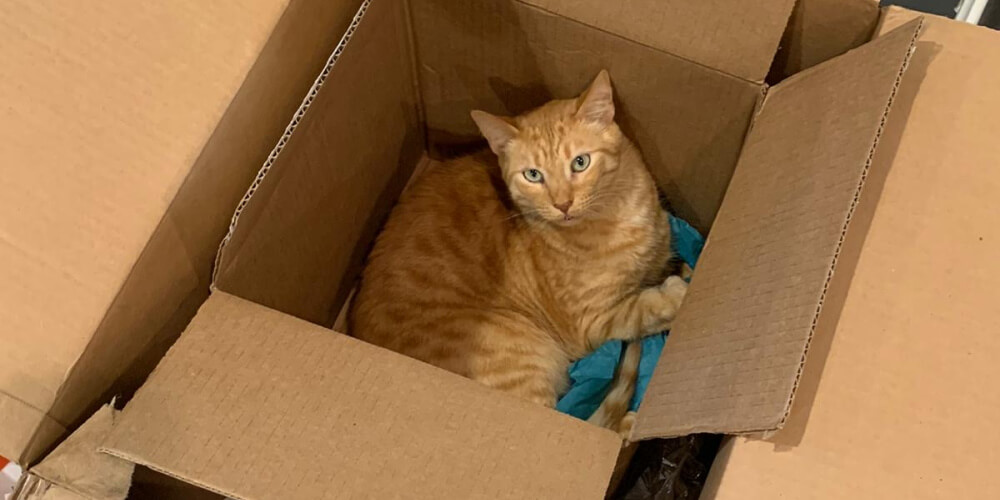
Melina Grin / Cats.com
Do you spoil your cat with endless toys and beds only to discover that your cat likes the box the item arrived in more than the item itself? If so, you’re not alone. Almost all cat owners are familiar with the catchphrase, “If it fits, I sits.” And you have probably noticed, (and wondered why) cats really like boxes.
Cats have a knack for resting or sleeping in unexpected places and squeezing themselves into tight places like bags, containers, sinks, laundry baskets, and of course, boxes. There’s just something about the confined and comfy space that they find irresistible. Although we might not have all the answers regarding why cats like to pack themselves into tiny spaces and small boxes, a few interesting theories explore this quirky feline phenomenon.
Why Do Cats Like Cardboard Boxes So Much?
Though cats like boxes for several reasons, safety and security are the main motives. Cats are both prey and predator, and boxes enable them to hunt, hide, and feel safe in an enclosed space.
Let’s explore the top eight reasons cats like to snuggle in cardboard boxes:
1. Boxes Offer Hiding Opportunities and Safety
Being able to hide is crucial for cats. Even the foremost confident or outgoing feline needs a place in its home to retreat and conceal occasionally. Boxes help kitties feel safe, allow them to assess their surroundings from a secure area, provide them with a sense of control over what happens to them, and improve their feelings of confidence.
Moreover, cats aren’t good at conflict resolution, particularly with their own species, so a cardboard box offers a secure space to retreat to in response to threatening behavior from other cats.
2. Cardboard Is a Terrific Insulator
As it turns out, cats aren’t only clever, but they know how to choose the correct product to keep up their body heat. The thermal property of corrugated cardboard makes it a good insulator since it traps heat. The enclosed space of a cardboard box offers warmth, tranquillity, and solace from the outside world.
3. Wonderful Cozy Sleeping Spots
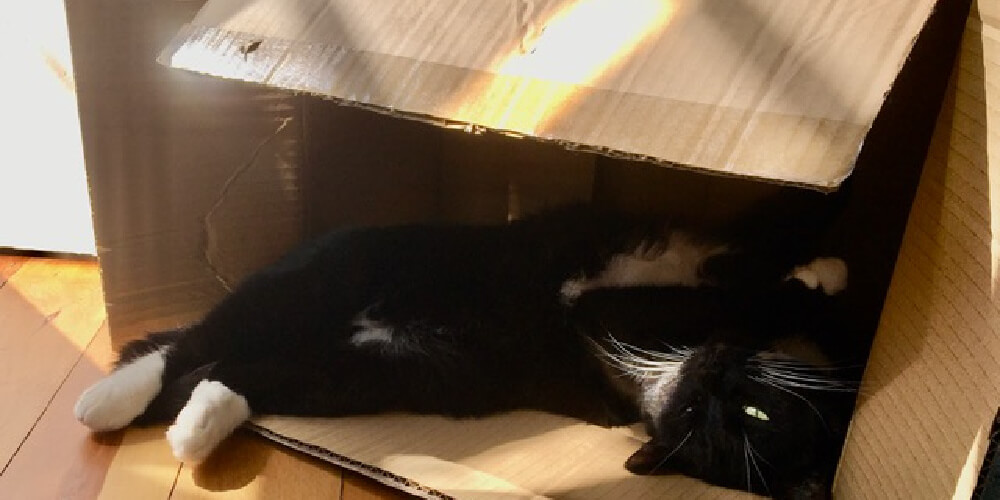
Serafina sunbaking inside a cardboard box. Melina Grin / Cats.com
Cardboard boxes are a favorite sleeping place for many felines since they provide warmth, protection, and comforting pressure. Boxes are a great place for uninterrupted sleep. A recent survey found that elderly cats’ top sleeping preferences are warm sunny spots, by the radiator, next to the fireplace, or on their owner’s bed. Although carton parcels came last on the list, experts recommend providing elderly cats with larger boxes with shallow entrances for easy access to account for the geriatric cat’s lack of body flexibility.
4. Fantastic Play Spaces
Regardless of the box shape or size, cats are inquisitive creatures who like to play and explore novelty items. Cardboard has a distinctive texture that’s ideal for endless fun and scratching is one of the reasons why why do cats love to sit in boxes as much as they do.
Most notably, it’s fun for cats to play through cut-out entry/exit holes in boxes. Boxes can also be turned upside down to provide variety. This is great for cats since they are attack predators who prefer to obscure themselves before pouncing on toys, other cats, and humans when they least expect it.
5. Stress Relievers
According to a 2014 study, cats that are supplied with hiding boxes in their new environment were less stressed and adapted to the new surroundings faster than those without a concealing box. This demonstrates the remarkable benefit of the humble cardboard box.
Moreover, “hide and perch” boxes are particularly gratifying in shelters and vet clinics; a cardboard box placed on its side allows easy accessibility while the perching spot on the top of a box enables cats to get off the ground, feel more secure, and experience less stress.
6. Sensory Enrichment
Sensory stimulation is extremely valuable and enjoyable for cats. Cats exposed to novel scents are much more exploratory and playful. Homemade sensory boxes filled with objects foraged from outdoors like dried leaves, twigs, feathers, catnip, silvervine, scrunched-up paper, toys, or treats encourage play while providing sensory enrichment.
Another quirky reason cats like boxes, is they sometimes enjoy shredding the cardboard into tiny pieces. This is due to the texture of the cardboard. The most common reasons for biting or gnawing on packing boxes are due to boredom, pica, predatory outlet, and teething in kittens.
7. Secluded Nesting Areas
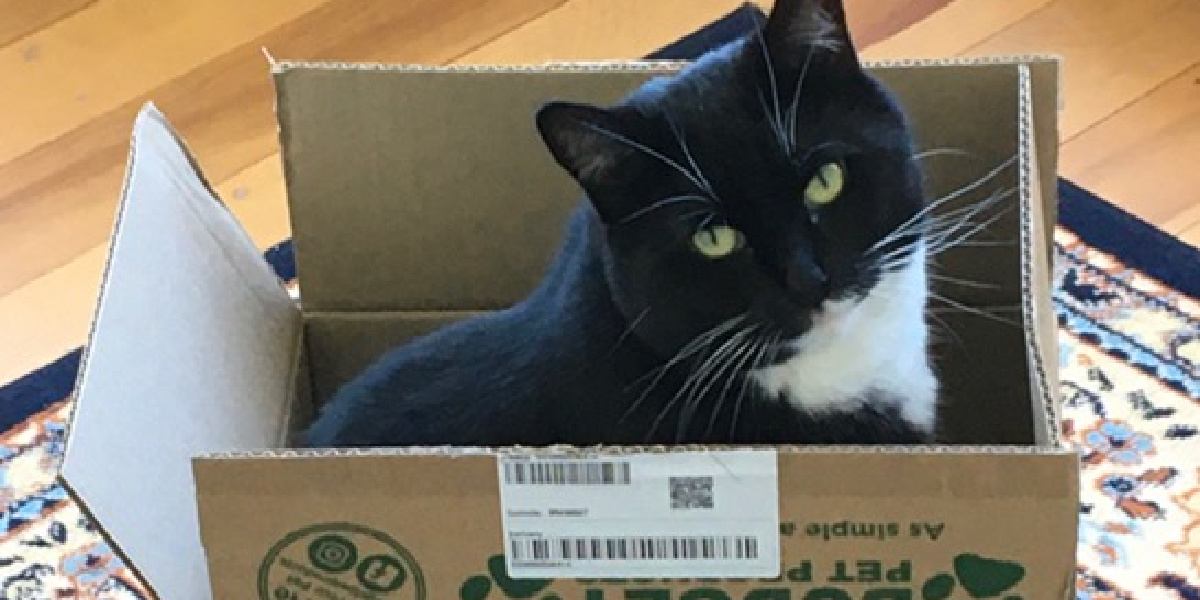
Simba sitting inside a cardboard box. Melina Grin / Cats.com
Lastly, queens like nesting in cardboard boxes with wool blankets since cartons are instrumental in preserving heat, providing privacy, and reducing prenatal/postnatal stress, which might negatively influence the health, development, and welfare of her offspring.
Summing Up
As cat owners, it’s our responsibility to supply our cats with a fulfilling, relaxed environment, including comfortable sleeping spots. Since cardboard boxes are inexpensive confined spaces that preserve warmth, as well as offer both ambush and hiding opportunities, they’re a great addition to a stress-free, happy cat home.
Also Read: The 10 Best Chew Toys for Cats
-
Atkinson, T. (2018). Practical Feline Behaviour. Oxfordshire: CAB International. Retrieved April 03, 2022
-
Care, I. C. (2020, September 01). Module 5 Creating a cat friendly home. International Cat Care Advanced Feline Behaviour for Vet Professionals. UK. Retrieved April 10, 2022
-
Halls, V. (2018, July 30). Behavioural aspects of caring for an elderly cat. UK. Retrieved April 07, 2022
-
C. M. Vernooij, L. D. (2019, October 14). The effect of a hiding box on stress levels and body weight in Dutch shelter cats; a randomized controlled trial. (P. One, Compiler) Retrieved April 10, 2022, from https://journals.plos.org/plosone/article?id=10.1371/journal.pone.0223492
-
Sarah L H Ellis, I. R. (2013). AAFP and ISFM Feline Environmental Needs Guidelines. Journal of Feline Medicine and Surgery, 219-230. Retrieved April 05, 2022

